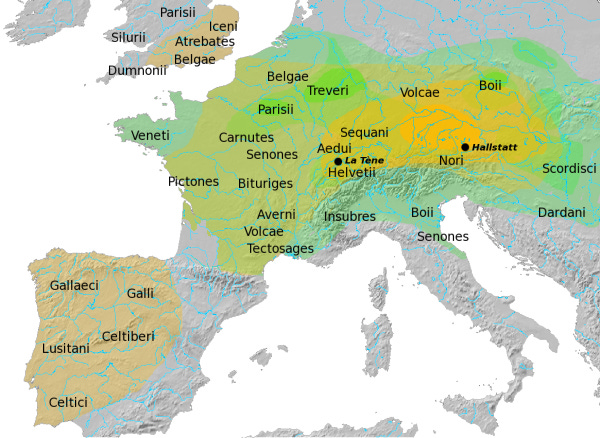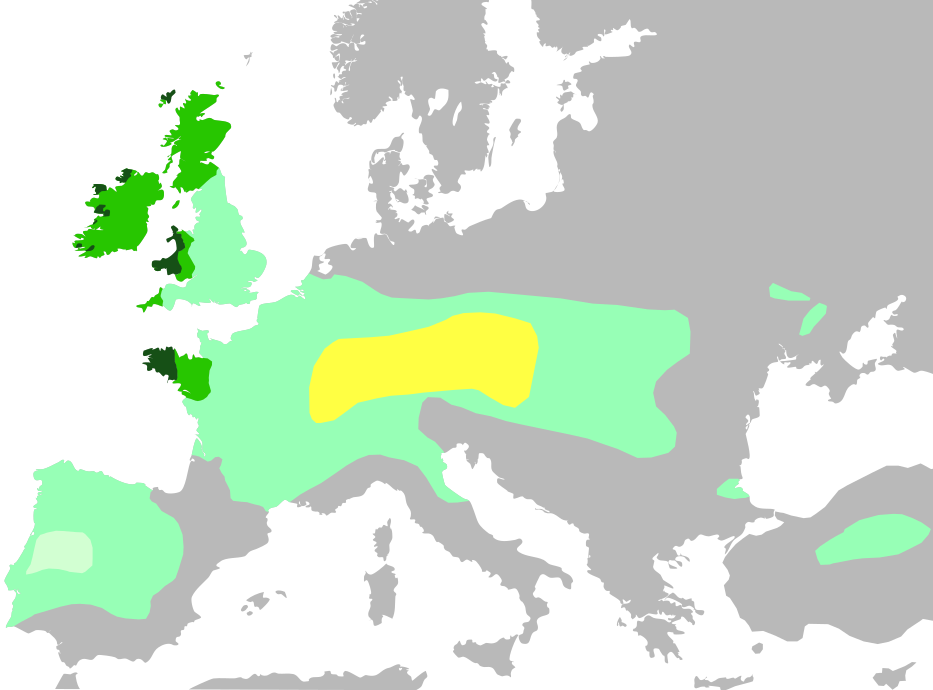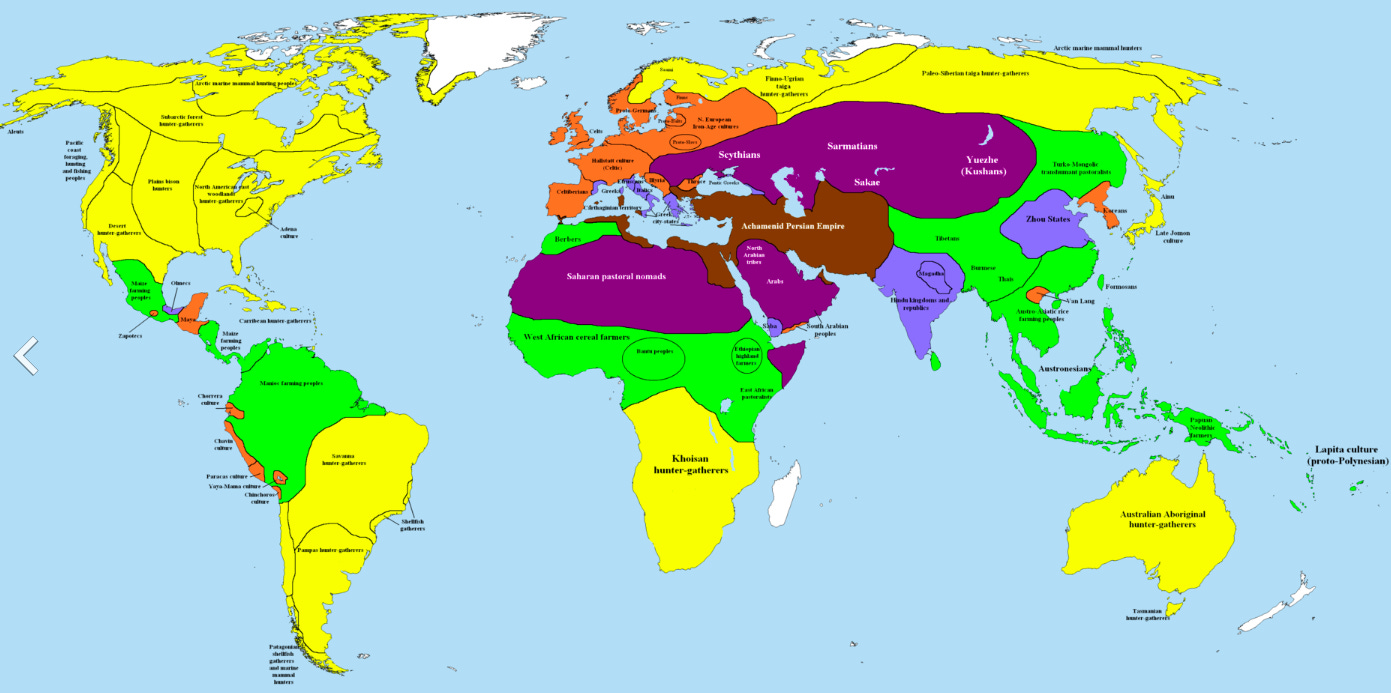First Traces of the West 2500 Years Ago?
The West's Emergence as a Historical Civilization (Excerpts from "We and the West" – 2/11)
What is “the West”? And how do we relate to it? Over the coming weeks, I will be pre-publishing excerpts from my book Wir und der Westen (und die Welt), ahead of the full English edition’s release under the title We and the West (and the World) later this year. The full list of excerpts is at the end of this post.
A meaningful starting point for tracing the origins of the West is the first millennium BC. This period, around the late Bronze Age and the Iron Age, is illuminated by Roman historical accounts, archaeological finds, and linguistic reconstructions. According to these sources, Europe at the time was predominantly inhabited by Celtic tribes of the Hallstatt and La Tène cultures. This was also approximately the era when Herodotus outlined the concept of the West in Ancient Greece.
The common model divides European prehistory into the Stone Age (from approx. 2 million years BC to 3000/2000 BC), the Bronze Age (3000/2000 BC to 1200/800 BC), and the Iron Age (1200/800 BC to 300/100 BC), based on the primary materials used for tools, weapons, and jewelry. By this period, the nomadic lifestyle of small hunter-gatherer tribes had given way to a more sedentary existence in permanent settlements and villages. There was trade and exchange with the Mediterranean region (as evidenced by Greek cultural influences visible in artifacts), and society appears to have been hierarchically structured. Furthermore, there seem to have been religious-spiritual beliefs and practices, alongside folk customs that have survived in indirect forms. The Easter festival, for instance, may trace its origins to Celtic spring festivals celebrating nature’s reawakening after winter. In all these dimensions, it is reasonable to assume that they influenced later civilizational developments.
Illustration: Western Europe in the Hallstatt and La Tène Periods
→ Approximate extent of the Hallstatt and La Tène cultures
Source: https://upload.wikimedia.org/wikipedia/commons/e/ee/Hallstatt_LaTene.png
On a direct linguistic level, Celtic remnants seem to survive primarily in geographical names and a handful of everyday words. Most people were likely engaged in agriculture, living on farms or in small villages, while the tribal elites resided in fortified hilltop settlements. One wonders if rural lifestyles in more recent centuries still trace back to these ancient structures and if are they, at their core, comparable.
The Celtic language group remains alive today in the form of Welsh in Wales, Scottish Gaelic in Scotland, Irish in Ireland, and Breton in Brittany, France, as well as languages with smaller speaker communities, such as Manx or Cornish in Cornwall.
Illustration: Celtic Expansion in Europe
Darkest area: Core region of the Hallstatt culture in the 6th century BC / Dark surrounding area: Maximum Celtic expansion around 275 BC / Light area in Iberia: Lusitania (Celtic settlement uncertain) / Light area in Northwestern Europe: The six “Celtic nations” with Celtic languages in the modern era / Lightest area: Present-day distribution of Celtic languages
Source: https://de.wikipedia.org/wiki/Kelten#/media/Datei:Celts_in_Europe-fr.svg
Ultimately, all of this still leaves us rather empty-handed. From today’s perspective, it is difficult to identify what imaginary and real lifeworlds and worldviews from this period directly went on to shape the later West. As far as we can ascertain, however, 2,500 years ago this region showed no clear precursors to a later Western civilization. Neither was there a socio-political entity that could be considered a predecessor, nor does there seem to have been much in terms of ideas and symbols that has had an obvious influence lasting to the present day.
Illustration: The World 2500 Years Ago
Source: https://en.wikipedia.org/wiki/Achaemenid_Empire#/media/File:World_in_
500_BCE.png
Around that time, however, half a millennium BC, increasingly complex societies and states were already emerging. This included ancient Greece itself, and as the first major empire, the Persian Achaemenid Empire, which can also be considered a precursor of Persian civilization (modern-day Iran). The illustration also reveals a proto-Chinese political entity with the Zhou states, and the early state formations of South Asia, today’s India.
Illustration: The World 2500 Years Ago – No “West” in Sight Yet
Source: https://en.wikipedia.org/wiki/Achaemenid_Empire#/media/File:World_in
_500_BCE.png
The geopolitically significant developments in the wider region had taken place in Mesopotamia (Μεσοποταμία mesopotamia, “between the rivers,” i.e., the land of the two rivers around the Tigris and Euphrates) as well as in the more eastern Mediterranean region. The aforementioned Herodotus had described the Persian Empire and the so-called Persian Wars, in which the Greeks had repelled the campaigns of the Persian Achaemenid Empire at Marathon in 490 BC and at Salamis around 480/479 BC.
These battles feature prominently in today’s entertainment industry. In California’s Hollywood, where an influential part of contemporary storytelling is produced, audiences are guided to identify with the Greeks against the Persian “barbarians.” The reference is relevant in the context of historical self-reference within the West, which presents itself as the descendants of the Greeks.
The Greek city-states and subsequently the empire of Alexander the Great eventually developed into the politically and culturally dominant pole of the region for the coming centuries.
From a Swiss perspective, it is worth noting that the Helvetii were a Celtic tribe of that precise era. The name originates from the Romans, who called them Helvetii. It was only the modern state though, first the Helvetic Republic (1798-1803) and then the Federal Constitution in the 19th century, that used the Latin term Confoederatio Helvetica (”Helvetic Confederation”) and Helvetia as symbols of the Swiss nation.
PRE-PUBLISHING HERE OVER THE COMING WEEKS
Excerpts from We and the West (and the World):
I. The West’s Emergence as a Historical Civilization
→ 1/11 The “West” Merely Relative? – Geographically Western Eurasia
→ 2/11 First Traces of the West 2500 Years Ago?
→ 3/11 Ancient Greece as a Key Reference – Not Only for the West
II. The West’s Trajectory toward Modernity
→ 4/11 Switzerland’s Emergence at the Heart of the West
→ 5/11 Western Expansion and Imperial Continuity
→ 6/11 The West in Modernity – The Measure of Almost All Things
III. The West as a Contemporary Entity
→ 7/11 The West in the Global Order
→ 8/11 Unipolar, Hegemonic, Transatlantic Biases
→ 9/11 Various Moral Souls in the West’s Breast
→ 10/11 Western Modes of Functioning – “Liberal” and “Democratic”?
→ 11/11 Barely Veiled Oligarchies? Truly Legitimate Social Order?
→ Bonus: Whither, Post-Unipolar West?







Hello friend! I’ve been on here for about a week now and I’m trying to meet new people.
I share history from antique books, some call it “alternative”. I talk about what’s written from a philosophical perspective.
My latest article shares historic evidence pointing towards the origins of Tartaria
https://open.substack.com/pub/jordannuttall/p/the-origins-of-tartaria?r=4f55i2&utm_medium=ios